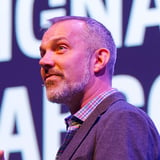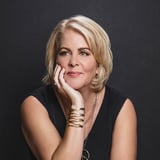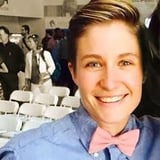Summary
What happens to your DesignOps team when your Design organization hits scale? Juggling the growth of your product, your people, and your processes is a demanding challenge, and strains the jack-of-all-trades skillset of even the most seasoned DesignOps practitioner. Our solution? Evolve DesignOps into two discrete tracks: Team Ops and Product Ops. We’ll look at how these tracks emerged, how they operate in practice, where they intersect (and where they differ), and the lessons learned from our “conscious uncoupling” of design team ops and product design ops responsibilities.
Key Insights
-
•
Splitting design ops into two tracks—team ops and product ops—allows balancing broad organizational support with deep product-focused delivery.
-
•
Team ops focuses on scaling culture, community, learning, and tools for the entire UX org, while product ops focuses on project delivery and team-specific needs.
-
•
Design ops teams often fail to scale in sync with their growing design organizations, creating an inflection point requiring new operating models.
-
•
Design ops practitioners swinging wildly between org-wide and product-level priorities causes partner frustration and operational inefficiency.
-
•
Assigning clear ownership, such as a dedicated onboarding owner, improves new hire experiences and reduces manager and employee stress.
-
•
Silos and lone-wolf syndrome among design ops can arise from ambiguous roles and uneven workload distribution.
-
•
Clear career ladders with specialization options help retain DPMs by providing growth paths beyond being generalist problem solvers.
-
•
Effective collaboration between team ops and product ops creates a feedback loop for continuous improvement and scaling of best practices.
-
•
An evolving design ops model demands patience and intentional change management, treating role transitions as carefully as new hires.
-
•
Cross-company benchmarking is limited, but Salesforce’s design ops coin model inspires others to consider multiple tracks beyond design and research ops.
Notable Quotes
"Imagine your current design ops team is like a coin and every time you flip it, it comes up heads, but coins have two sides."
"Team ops goes wide to support 300-plus UX designers globally; product ops goes deep supporting 40-plus product design teams."
"Our design ops team was a step behind the growth of our design team, solving the wrong problems at the wrong scale."
"Design ops is always swinging wildly between priorities, making partners wonder why invest if you’re always going this way or that."
"If nobody owns the onboarding experience, it likely won’t get done or get the energy it deserves."
"DPM loneliness and siloing happen because of wearing too many hats and inheriting mismatched responsibilities."
"A design ops career ladder can look like a step stool unless you create multiple tracks for growth and specialization."
"With our new operating model, partners are more confident funding UX ops because of increased clarity and focus."
"As your design practice matures, your design ops team will reach inflection points, and it’s okay to flip the coin and explore the other side."
"Be human first when creating new roles; treat them with the same care as hiring new team members."
Or choose a question:














More Videos

"My job was to ask tons of discovery questions to uncover what my clients really needed, not just what they said they wanted."
Steve ChaparroBringing Into Alignment Brand, Culture and Space
August 13, 2020

"When I announced the project shutdown, a flood of employee emails stopped it—it had become part of the fabric."
Elizabeth ChurchillExploring Cadence: You, Your Team, and Your Enterprise
June 8, 2017

"People always move the chair slightly when they sit down for that small exercising of control or agency."
Sha HwangThe First Fifty Years of Civic Design
November 16, 2022

"Layoffs are a collective trauma – it’s okay to acknowledge the emotions and grief you feel."
Corey Nelson Amy SanteeLayoffs
November 15, 2022

"Talking in first person increases empathy and leads to better design outcomes."
Noz UrbinaRapid AI-powered UX (RAUX): A framework for empowering human designers
May 1, 2025

"Organizations say they want to break down silos but often create new ones in product teams; service design helps reconnect them."
Lavrans Løvlie Ben ReasonAsk me anything – Authors of Service Design: From Insight to Implementation
November 19, 2025

"Design teams reporting through engineering tend to have the worst quality scores."
Peter MerholzThe 2025 State of UX/Design Organizational Health
November 12, 2025

"The Shaker village sidewalks followed people’s natural inclinations, not forcing unnatural movement."
Daniel GloydWarming the User Experience: Lessons from America's first and most radical human-centered designers
May 9, 2024

"Having a narrative and a point of view about how you deliver value is key in interviews."
Louis RosenfeldCoffee with Lou
January 11, 2024

















